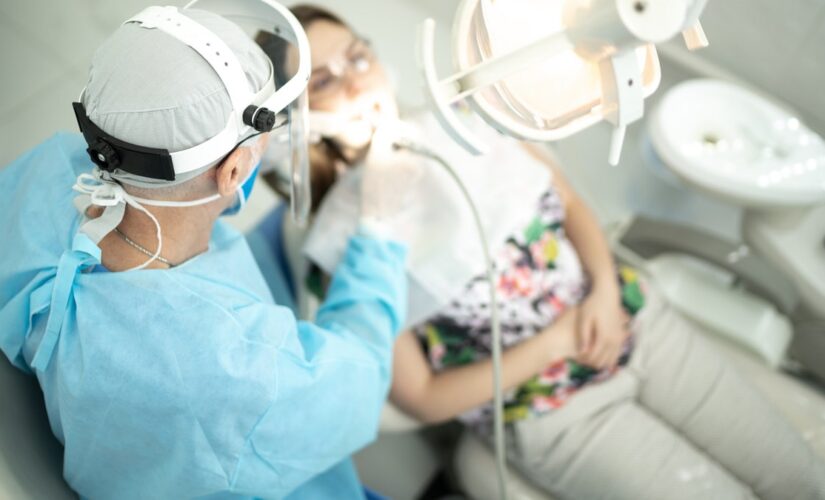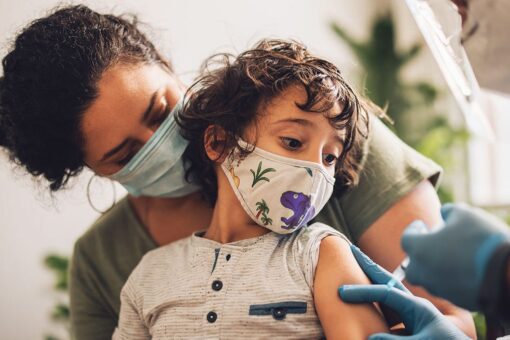The U.S. Centers for Disease Control and Prevention (CDC) has issued an emergency response and preparedness health advisory about outbreaks of nontuberculous mycobacteria infections that have happened via dental waterlines.
The alert was issued through the agency’s Health Alert Network. It reminds dental patients and professionals of the importance of sanitation during dental procedures.
Nontuberculous mycobacteria are defined as “opportunistic pathogens [that place] some groups at increased risk, including those with underlying lung disease or depressed immune systems,” according to the CDC.
POPCORN STUCK IN MAN’S TOOTH LEADS TO LIFE-THREATENING INFECTION, OPEN HEART SURGERY
While infections are rare, the CDC noted that there have been multiple documented cases of children contracting nontuberculous mycobacteria after undergoing pulpotomies — a procedure that involves the removal of a tooth’s diseased pulp — according to the American Dental Association.
The documented outbreaks reportedly happened in March 2022. They stem from a pediatric dental clinic where treatment water had high levels of bacteria, according to the CDC.
The city and state where the recent outbreaks occurred were not disclosed.
Water is commonly used in dental procedures. An investigation into a cluster of outbreaks is ongoing, the CDC says.
(iStock)
Nontuberculous mycobacteria were transmitted to patients by dental unit waterlines, which the CDC defined as the “narrow-bore plastic tubing” that carries water through a “high-speed handpiece, air/water syringe, and ultrasonic scaler.”
An investigation into the cluster of outbreaks is ongoing and a preliminary site visit has been conducted, the CDC’s alert said.
“High numbers of common waterborne bacteria can be found in untreated dental unit water systems,” the CDC wrote.
Similar outbreaks at pediatric dental offices have happened in the past, including 71 dental patients in California — who were infected with odontogenic (infections that originate in the teeth or surrounding tissue) nontuberculous mycobacteria after receiving pulpotomy procedures in 2016.
A year earlier than that, 24 dental patients in Georgia were infected with odontogenic nontuberculous mycobacteria following the same procedure.
TIKTOK REVEALING DENTIST CAN DETECT PREGNANCY BY LOOKING AT PATIENT’S MOUTH STUNS USERS
“The outbreaks in California and Georgia involved young children, with ages ranging from 4 to 8 years,” the CDC wrote.
“Many of the children developed severe infections with clinical diagnoses such as cervical lymphadenitis and mandibular or maxillary osteomyelitis, and required hospitalization, treatments such as intravenous antibiotics, and surgical procedures.”
Infections from bacteria-filled dental water can lead to mild or severe complications.
(iStock)
“Complications from their infections included permanent tooth loss, hearing loss, facial nerve palsy, and incision fibrosis,” the alert continued.
Dental waterline units are prone to biofilm formation and bacteria buildup when water flow rates are low and have frequent periods of stagnation.
“As a result, high numbers of common waterborne bacteria can be found in untreated dental unit water systems,” the CDC wrote.
“Disease-causing microorganisms found in untreated dental unit water can include Legionella, Pseudomonas aeruginosa, and nontuberculous mycobacteria (NTM).”
TOOTH INFECTION LEADS TO 26-YEAR-OLD CALIFORNIA DAD’S DEATH
Other dental procedures that could also pose a risk if people are exposed to tainted water include incisions, excisions, biopsies, periodontal surgeries, apical surgeries, implant surgeries, teeth extractions and bone removal, the CDC noted.
Dental professionals should make sure they’re working with sanitized tools and sterile water.
(iStock )
Dental surgeons and practitioners should only use “sterile solutions as a coolant or irrigant” while “using an appropriate delivery device, such as a sterile bulb syringe, sterile tubing that bypasses dental unit waterlines, or sterile single-use devices,” according to the CDC.
The agency recommends that dental professionals and facilities follow infection control guidelines in dental settings, monitor water quality and treat dental unit waterlines for patient safety.
Biofilm can be removed and prevented with routine sanitation practices, which could include disinfectants that meet Environmental Protection Agency regulatory standards for drinking water or commercial disinfectant products and devices.
CLICK HERE TO GET THE FOX NEWS APP
Dental providers should consult manufacturer instructions when handling dental equipment, the health agency said, to ensure they’re using “appropriate methods” and are effectively maintaining and monitoring the quality of dental water they utilize.
Dental patients can ask dental providers about their sanitation policies.
(iStock)
Dental patients and parents or guardians of pediatric dental patients should contact a dental provider if an infection is suspected post-treatment, the CDC’s advisory said.
FOLLOW US ON FACEBOOK FOR MORE FOX LIFESTYLE NEWS
“Signs and symptoms of a postoperative dental infection could include a localized oral abscess, fever, or pain and swelling in the mouth or neck,” the CDC wrote.
“Talk to your dental provider about their infection prevention and control practices and the steps their staff take to ensure safe treatment for all patients.”




